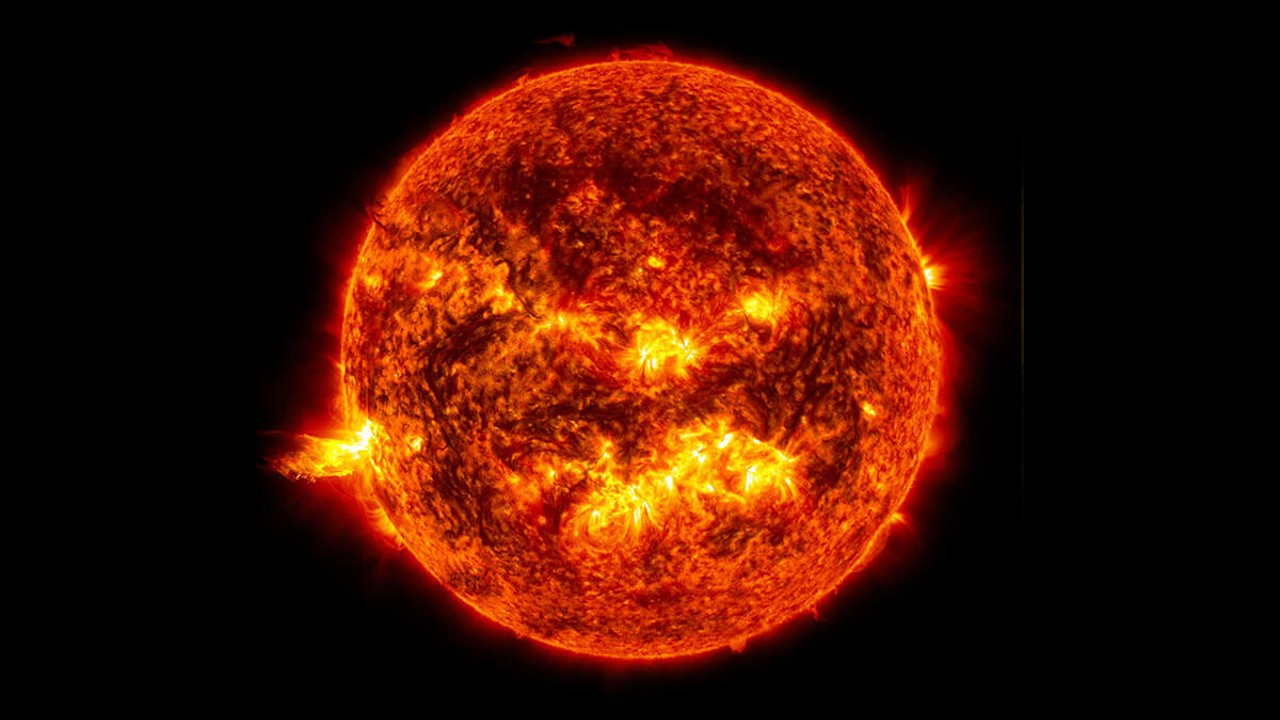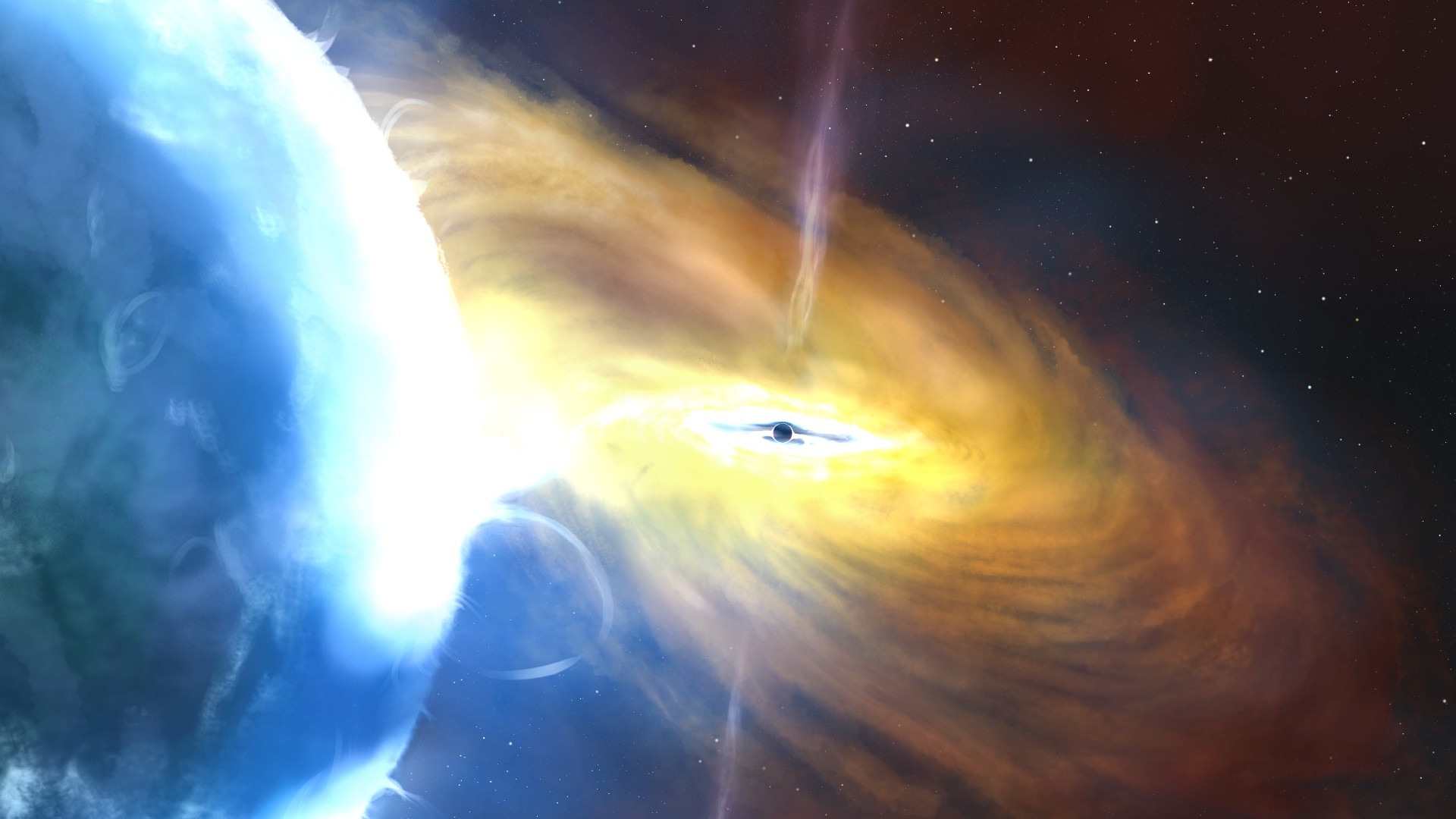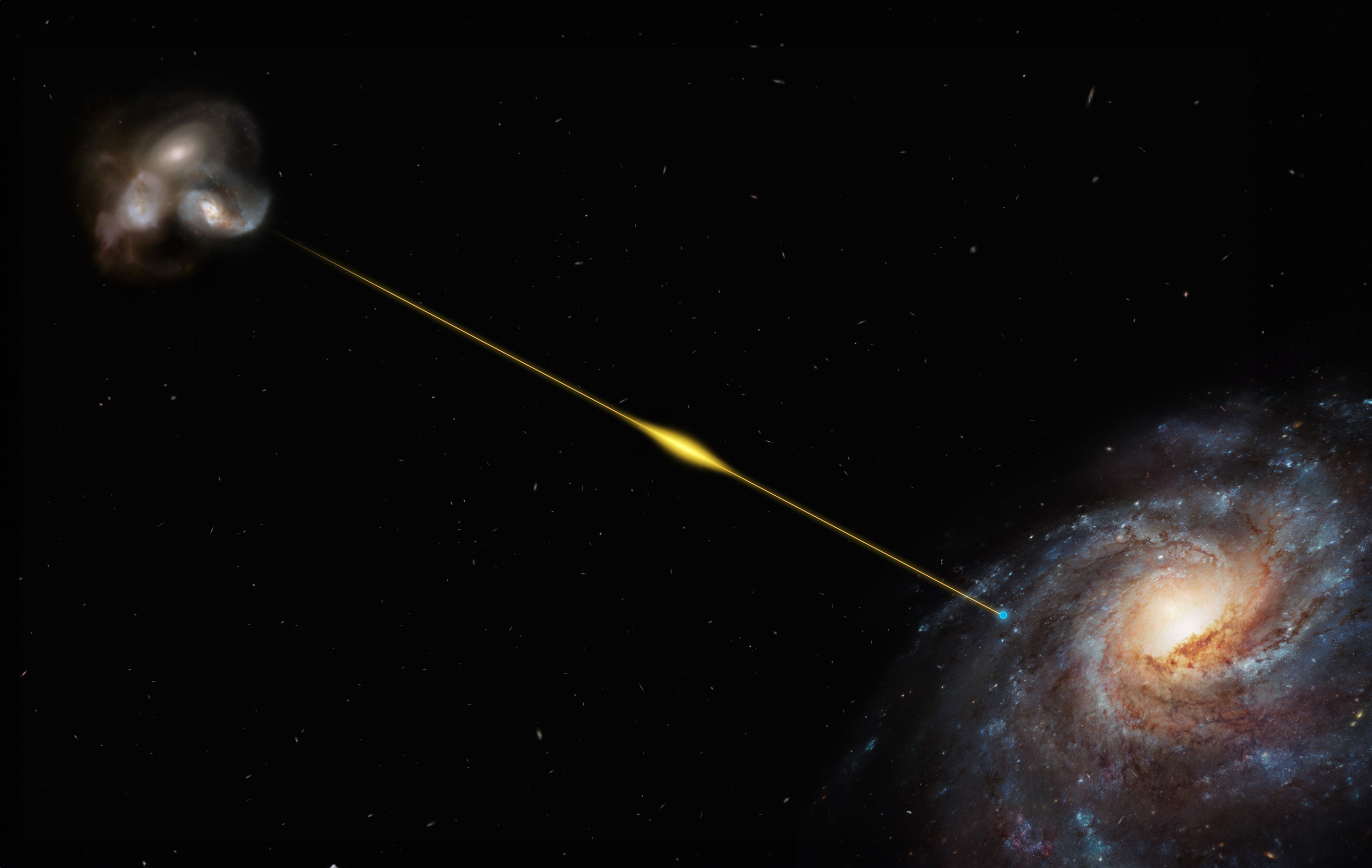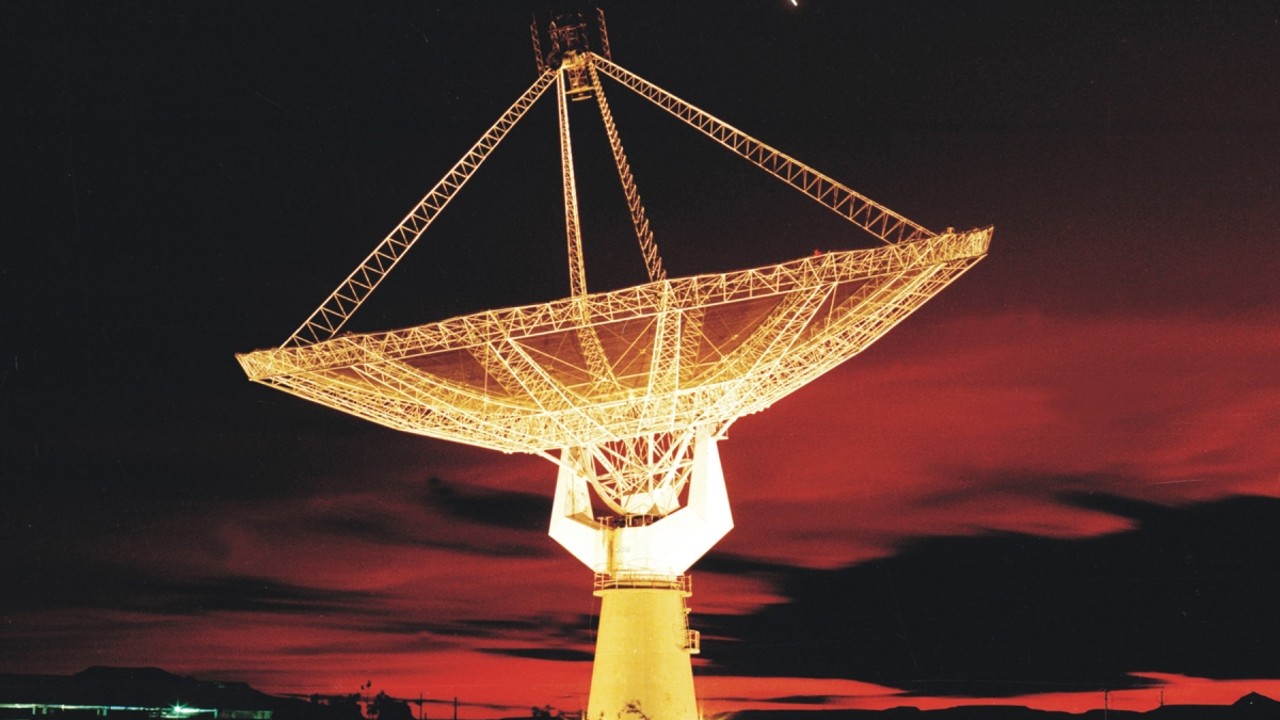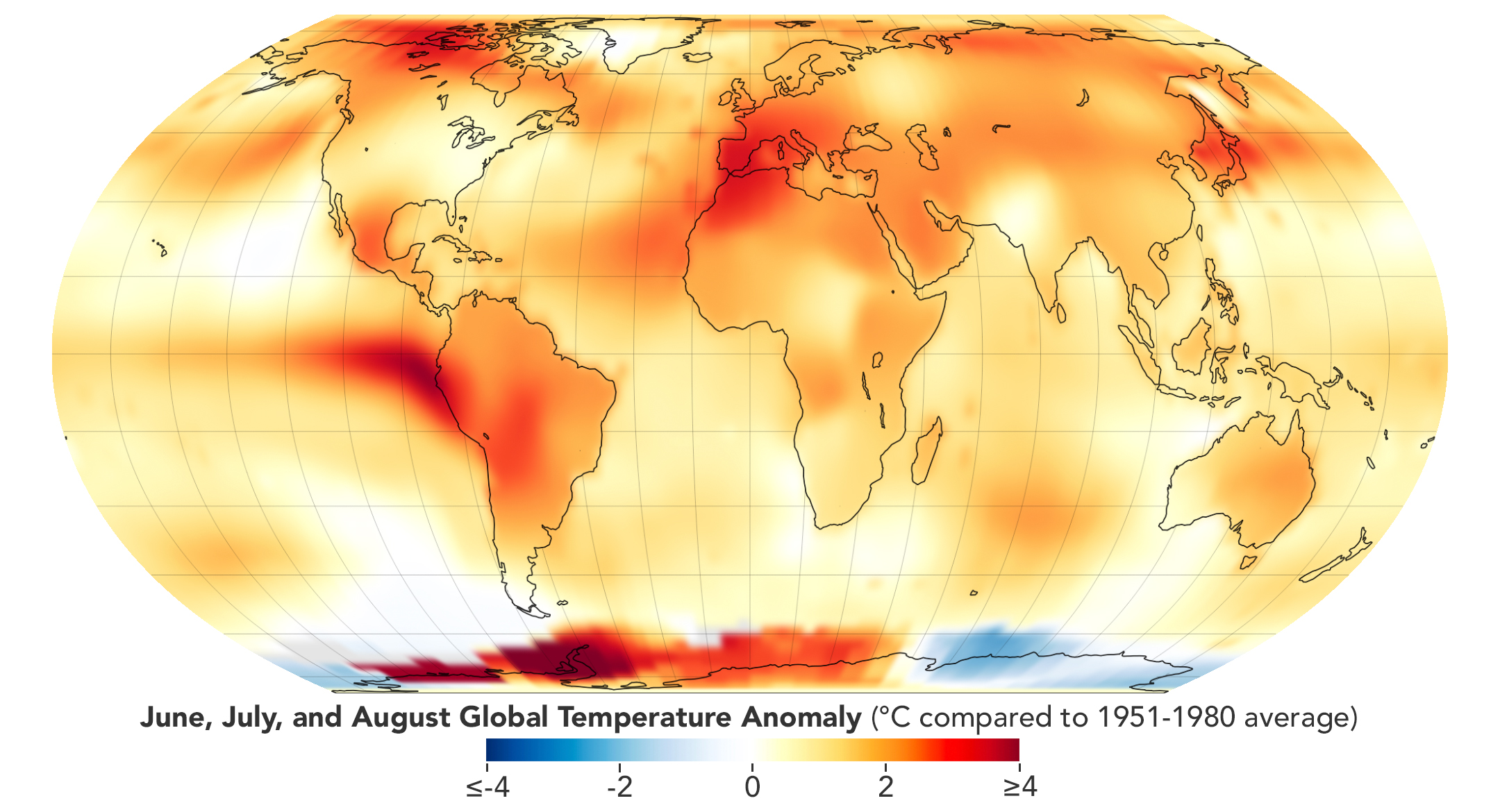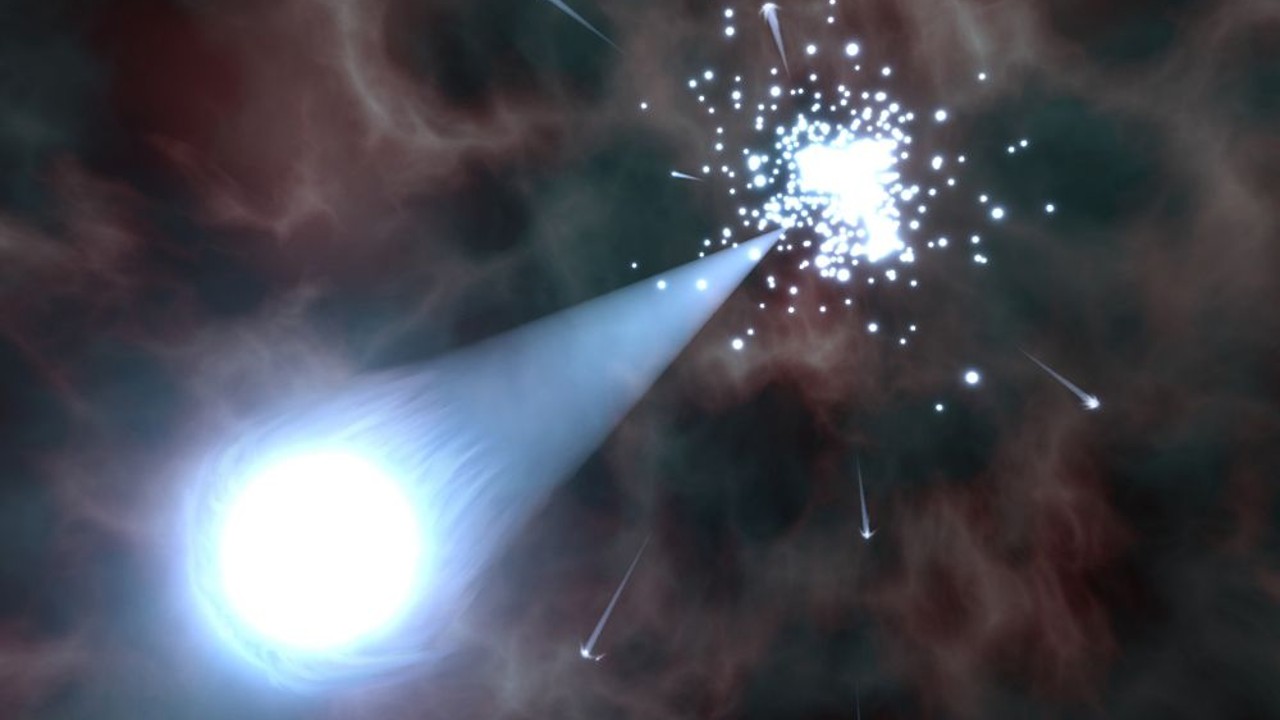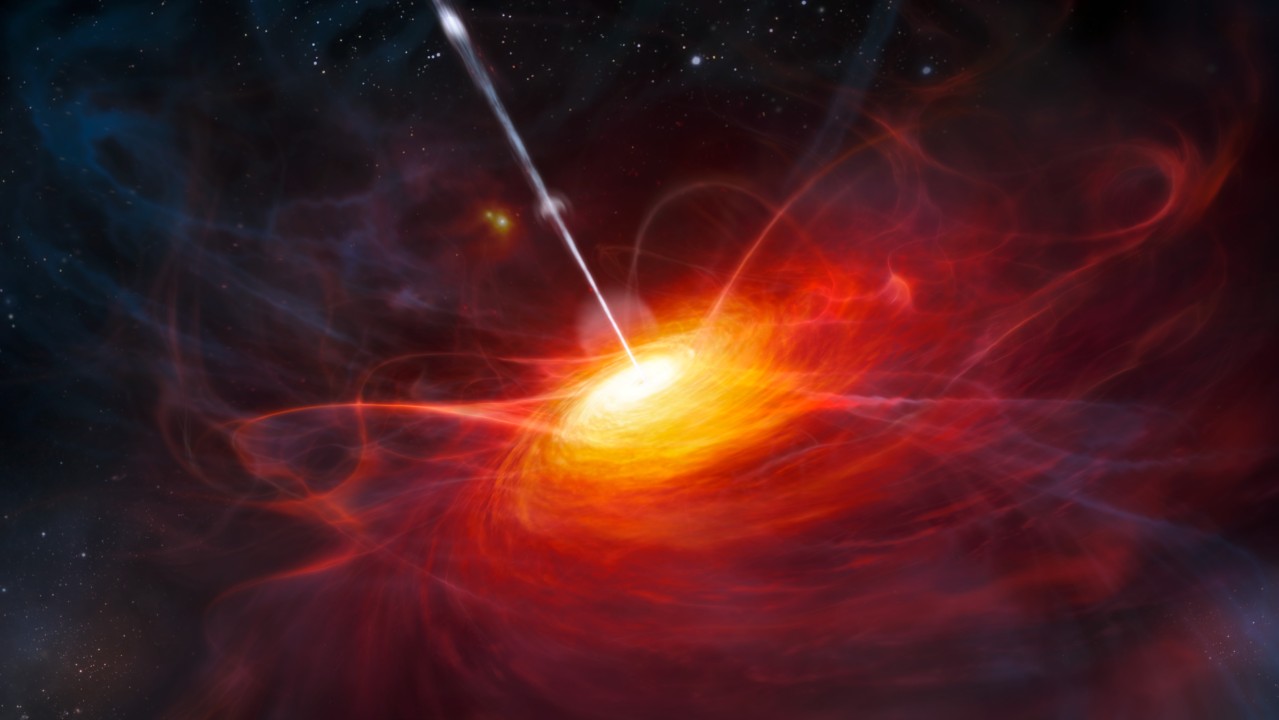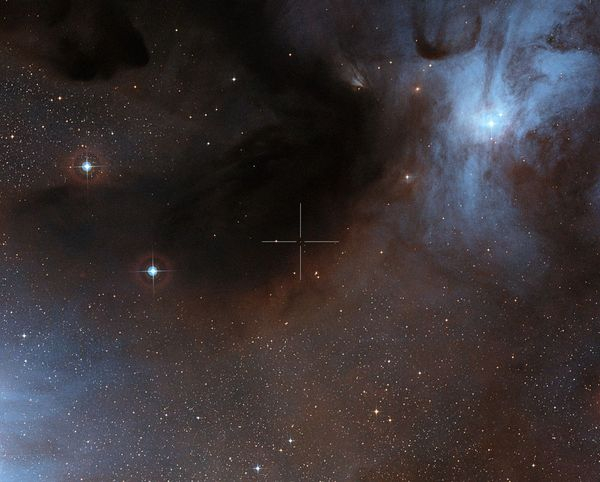13 record-breaking space discoveries of 2023
The past 12 months have seen a host of new astronomical records broken, from exploding stars to faraway black holes.
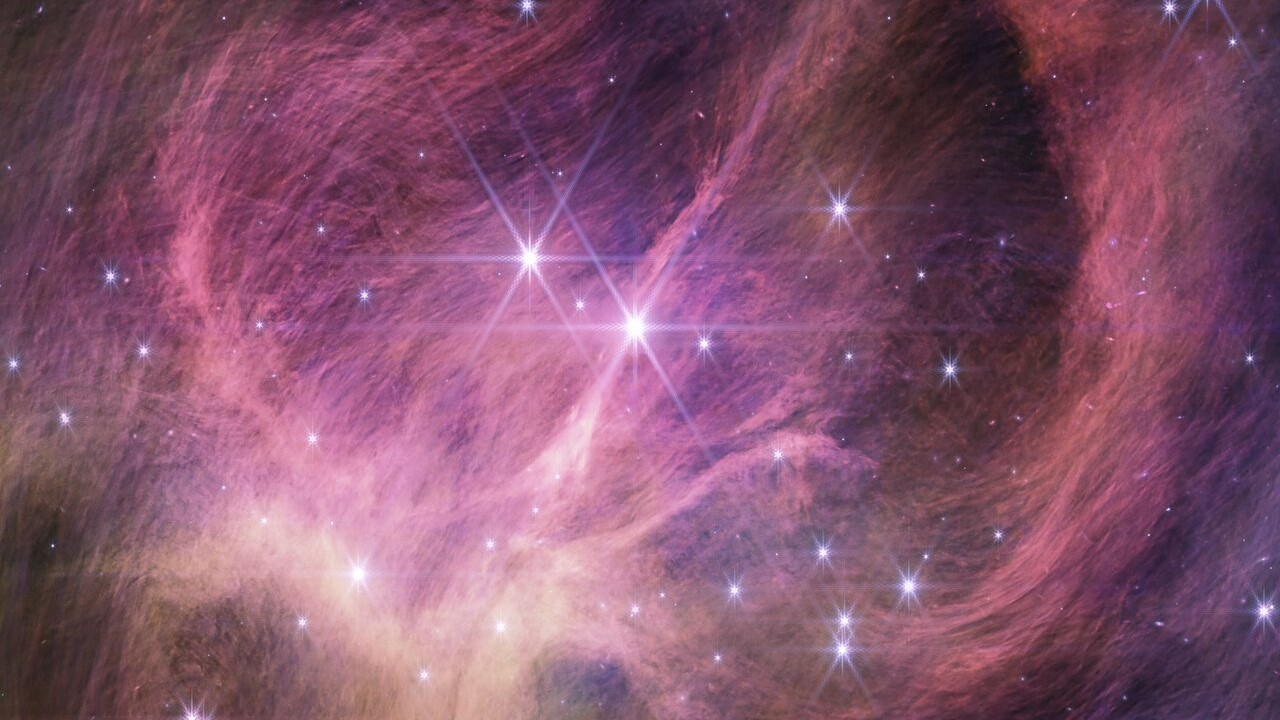
- 1. The most powerful light from the sun
- 2. Vela pulsar smashes gamma-ray energy record
- 3. The universe's biggest explosion
- 4. The most distant fast radio burst
- 5. Most distant detection of the 21cm line
- 6. Ingenuity takes to the air in record time
- 7. NASA confirms the hottest summer on record
- 8. Antarctic sea ice hits record low
- 9. Astronaut breaks NASA record for time spent in space
- 10. This white dwarf is an interstellar speed demon
- 11. The most ancient supermassive black hole ever detected
- 12. Planet or failed star? The JWST finds the tiniest brown dwarf
- 13. Tonga volcano sparked the most intense lightning storm ever seen
1. The most powerful light from the sun
Among the new astronomical records set in 2023 was an announcement of the highest-energy gamma ray ever seen coming from the sun, an order of magnitude more powerful than had previously been seen.
"The sun is more surprising than we knew," Mehr Un Nisa, an astronomer at Michigan State University and one of the authors who described the discovery in Physical Review Letters, said in a statement.
Previously, NASA's Fermi Gamma-ray Space Telescope had detected gamma-rays coming from the sun with energies up to 200 gigaelectronvolt, or GeV (200 billion electronvolts). That's incredibly energetic, to say the least. These gamma-rays are produced when cosmic rays, which are particles from deep space moving at almost the speed of light, collide with the solar atmosphere. However, observations by the High-Altitude Cherenkov Observatory, or HAWC, in Mexico have officially trumped that.
HAWC is able to detect gamma rays indirectly. When a gamma-ray photon enters Earth's atmosphere, it's bound to collide with an atmospheric molecule, smashing the molecule apart to form a shower of subatomic particles. These rain down on HAWC, which is a funny kind of telescope: it consists of 300 water tanks, each filled with 200 metric tons of water. The subatomic particles from the collision between a gamma ray and a molecule are moving so fast that when they enter water, they are actually moving faster than the speed of light through water (which is slightly slower than through a vacuum or through air). The subatomic particles produce a flash of light, a kind of visual equivalent of a sonic boom, called Cherenkov radiation.
The HAWC data revealed subatomic particles that had come from solar gamma rays with energies of about a trillion electronvolts (1 teraelectronvolt, or TeV), and a few that had energies up to nearly 10 TeV.
"After looking at six years' worth of data, out popped this excess of gamma rays," said Nisa. "When we first saw it, we were like, 'we definitely messed this up, the sun cannot be this bright at these energies.'"
Although the exact mechanism is still unclear, cosmic rays are thought to be responsible for these gamma-rays too, penetrating 1,000 kilometers (620 miles) below the visible surface of the sun, where they interact with hidden magnetic fields. So, detecting these gamma rays might be able to tell us a bit about what’s happening below the roiling surface of the sun.
Breaking space news, the latest updates on rocket launches, skywatching events and more!
However, even though these gamma-rays are the most powerful ever seen coming from the sun, they are not the most powerful ever detected from the universe as a whole. That record goes to a gamma-ray detected in 2021 by China’s Large High Altitude Air Shower Observatory, which had an incredible energy of 1.4 quadrillion electronvolts (1.4 petaelectronvolts, PeV) and came from somewhere deep in the universe.
Read more here: Sun blasts out highest-energy radiation ever recorded, raising questions for solar physics
2. Vela pulsar smashes gamma-ray energy record
More record-breaking gamma-rays were detected in 2023, with photons pushing 20 TeV detected coming from the pulsar within the Vela supernova remnant.
A pulsar is a spinning neutron star that consists of the remains of a massive star that once went boom in a supernova. Pulsars are normally detectable at radio wavelengths, but some of them also emit gamma-rays, thought to be produced by electrons spiraling around the phenomena's intense magnetic-field lines.
The gamma-ray emission from a pulsar can be illustrated as a spectrum of intensity versus energy. In most cases, these gamma-ray energies run up to a few hundred GeV, above which there is a cut-off. Occasionally, a pulsar will be seen to push through this cut-off — the pulsar in the Crab Nebula has been seen to emit gamma-rays that peak at 1 TeV.
However, the Crab pulsar's peak has been utterly smashed by gamma rays detected coming from a pulsar in the Vela supernova remnant. The discovery was made by the High Energy Stereoscopic System (HESS) in Namibia. These gamma rays are way above the usual GeV cut-off, which implies that our understanding of how electrons are accelerated in strong magnetic fields is incomplete.
Read more here: Pulsar surprises astronomers with record-breaking gamma-rays
3. The universe's biggest explosion
The most intense, long-lasting and powerful explosion ever seen — ten times brighter than any known supernova and still erupting even now — was discovered in a galaxy whose light has been traveling to us for 8 billion years, according to new research revealed in May in the Monthly Notices of the Royal Astronomical Society.
Cataloged as AT2021lwx, the explosive event was co-discovered by the Zwicky Transient Facility in California and the Asteroid Terrestrial-impact Last Alert System (ATLAS) in Hawaii, which looks for transient events in the sky that can be anything from a moving asteroid to a flaring cosmic explosion.
"Once you know the distance to the object and how bright it appears to us, you can calculate the brightness of the object at its source," said Sebastian Hönig of the University of Southampton in the UK in a statement. "Once we’d performed those calculations, we realized this is extremely bright."
At its brightest, AT2021lwx shone with a luminosity two trillion times brighter than our sun. Astronomers suspect that AT2021lwx is not an exploding star, as such explosions fade after a few weeks or months, but rather a supermassive black hole consuming a huge cloud of gas — perhaps a cloud thousand times more massive than the sun itself. Astronomers call this a tidal disruption event; no such event on this scale has ever been witnessed before. The gas cloud is ripped apart by the vice-like gravitational tidal forces of the black hole, sending shockwaves reverberating through the tortured cloud and releasing huge amounts of energy.
"With new facilities, like the Vera Rubin Observatory's Legacy Survey of Space and Time, coming online in the next few years, we are hoping to discover more events like this and learn more about them," said Southampton's Philip Wiseman. "It could be that these events, although extremely rare, are so energetic that they are key processes to how the centers of galaxies change over time."
Read more here: Boom! Astronomers just watched the largest explosion in space rage for 3 years
4. The most distant fast radio burst
The most distant fast radio burst (FRB) ever detected was revealed in 2023.
A report in the Oct. 19 issue of the journal Science described how, on June 19, 2022, an FRB was spotted having traveled through space for a gargantuan 8 billion years.
FRBs are mysterious. They are short bursts of radio waves that last mere milliseconds, yet in that short fraction of time they can emit as much energy as our sun does in 30 years. Nobody knows what produces them; often, they are seen to go off randomly in the universe. Sometimes, they are even seen to repeat. Magnetars, which are extremely magnetic neutron stars, are the main suspect.
The record-breaking burst was detected by the Australian Square Kilometer Array Pathfinder (ASKAP), which is a group of 36 radio dishes. ASKAP pinpointed the location of the burst, cataloged as FRB 20220610A, which then allowed the Very Large Telescope in Chile to follow up and identify the source as a system of two or three colliding galaxies that we see as they were 8 billion years ago.
Because FRB 20220610A has had to travel through so much space to reach us, it encounters lots of rogue electrons that live in that intergalactic space. The electrons steal some of the radio waves' energy (depending on wavelength) which results in the radio signal becoming slightly dispersed. The more an FRB's signal is dispersed, the more electrons it has passed through. Therefore, the measure of dispersion could tell us about hidden stores of atomic matter that are otherwise undetectable.
"While we still don't know what causes these massive bursts of energy, the paper confirms that fast radio bursts are common events in the cosmos and that we will be able to use them to detect matter between galaxies and better understand the structure of the universe," Ryan Shannon of Swinburne University in Australia said in a statement.
Read more here: Record-breaking radio burst could help us find the universe's missing matter
5. Most distant detection of the 21cm line
The most distant detection of radio emissions associated with neutral hydrogen gas was achieved in 2023, with the discovery of radio waves from a galaxy that we see as it existed in the universe 8.8 billion years ago.
The 21cm line, or 21 centimeter line, is the most fundamental wavelength in the whole of radio astronomy. It's used to study the distribution of hydrogen gas in galaxies and throughout the cosmos at large. Radio telescopes routinely observe the 21cm line in our Milky Way galaxy and other galaxies in the modern universe. Galaxies in the distant universe are usually too faint, however, to be detected at this wavelength.
But one galaxy, cataloged as SDSSJ0826+5630 (the name means it was discovered as part of the Sloan Digital Sky Survey at Apache Point Observatory in New Mexico, the other numbers are its coordinates), has an advantage. Its light, including its radio emission, has been magnified by an intervening gravitational lens — a distortion in space caused by a massive object, in this case a large galaxy, lying in the foreground.
"This effectively results in the magnification of the signal by a factor of 30, allowing the telescope to pick it up," Nirupam Roy of the Indian Institute of Science said in a statement.
The lensed 21cm radio signal was detected by the Giant Metrewave Radio Telescope in India. Astronomers, including Roy, were able to deduce the amount of gas in SDSSJ0826+5630 on the basis of the strength of the 21cm signal. They concluded that SDSSJ0826+5630 contains twice as much mass in the form of neutral hydrogen gas as it does in stars.
Read more here: Astronomers capture radio signal from ancient galaxy at record-breaking distance
6. Ingenuity takes to the air in record time
By virtue of being the only helicopter on Mars, NASA's Ingenuity chopper only has its own records to beat, but that it continues to beat them is a testament to the longevity of what was and still is a truly experimental mission.
On Sept. 16, Ingenuity performed its 59th flight, which became the longest flight of its mission up to that point, hovering over one spot for 142.59 seconds. It then matched this duration during flight 63 on Oct. 19, during which it also flew across land for 579 meters (1,901 feet), which is the third largest distance it had ever covered in one flight (the record for farthest flight being 704 meters/2,310 feet on April 19, 2022).
Since arriving on Mars along with the Perseverance rover in February 2021, Ingenuity has flown 67 flights as of Dec. 17. It's been in the Martian air for a total of 121.1 minutes, and has covered 15.3 kilometers (9.5 miles), reaching as high as 24 meters (78.7 feet) in the air.
Read more here: NASA's Ingenuity helicopter breaks altitude record on 59th Mars flight
7. NASA confirms the hottest summer on record
Not all records are welcome achievements.
NASA's Goddard Institute of Space Studies (GISS) in New York confirmed that the Northern Hemisphere summer in 2023 experienced the warmest summer since its temperature records began in 1880, a consequence of human-caused global warming coupled with the effect of El Niño, which helped raise sea temperatures.
GISS scientists compare global temperatures by relating them to the average summer temperatures between 1950 and 1980. They found that June, July and August combined were on average 0.23 degrees Celsius (0.41 degrees Fahrenheit) warmer than the 1950–1980 average. August alone was 1.2 degrees Celsius (2.2 degrees Fahrenheit) warmer. This might not sound like much, but efforts to mitigate climate change rely on keeping global warming to less than 1.5 degrees Celsius above the pre-industrial average.
"Summer 2023's record-setting temperatures aren't just a set of numbers — they result in real-world consequences," NASA Administrator Bill Nelson said in a statement. These consequences included huge wildfires in Canada, Greece and Hawaii among other countries, and deadly heat waves across mainland Europe, Japan, South America and the United States.
"Unfortunately, climate change is happening," said climate scientist Gavin Schmidt, director of GISS. "Things that we said would come to pass are coming to pass, and it will get worse if we continue to emit carbon dioxide and other greenhouse gases into our atmosphere."
Read more here: NASA confirms summer 2023 was Earth's hottest on record
8. Antarctic sea ice hits record low
There was more depressing climate news in 2023, as a joint study by NASA and the National Snow and Ice Data Center (NSIDC) at the University of Colorado, Boulder, found that the amount of sea ice in Antarctic waters reached a record low. Further, in the Arctic, things were not much better. Scientists found it exhibited the sixth lowest amount of sea-ice measured since records began.
Sea-ice extent is defined as areas of the ocean where the ice-cover fraction is at least 15%.
Using satellite data to follow sea-ice across polar regions in both hemispheres, scientists discovered that Antarctic sea ice covered just 16.96 million square kilometers (6.5 million square miles) of the continent on Sept. 10, the lowest it's ever been. The previous low came in 1986, when sea-ice coverage was 1.03 square million kilometers (398,000 square miles) greater than the latest figure.
In the Arctic, there was even less sea ice (though not a record low), with frozen waters receding to just 4.23 million square kilometers (1.63 million square miles) on Sept. 19. This is 1.99 million square kilometers (770,000 square miles) less than the average during the period between 1981 and 2010.
"It's a record-smashing sea-ice low in the Antarctic," said Walt Meier of NSICD in a statement. "Sea-ice growth appears low around nearly the whole continent as opposed to any one region."
The loss of sea ice is the result of growing temperatures as a result of human-induced global warming, and it's a process that can rapidly spiral into a vicious cycle. Ice is effective at reflecting solar energy back into space, so the less ice there is, the less solar energy is reflected away. In turn, the planet warms. Plus, the less ice there is, the more sections of darker ocean are exposed, which can absorb solar energy more efficiently. This ultimately raises ocean temperatures, resulting in less sea ice — and so on.
Read more here: Antarctic sea ice hits record low, satellites reveal
9. Astronaut breaks NASA record for time spent in space
NASA astronaut Frank Rubio inadvertently made history in 2023 by becoming the first American to spend a full year in space on board the International Space Station (ISS). Rubio launched along with cosmonauts Sergey Prokopyev and Dmitri Petelin, joining Expedition 67. The trio were set to return to Earth after six months, but a coolant leak in their Soyuz capsule meant they had to stay on the ISS for more than a year. The trio finally returned to Earth, landing in Kazakhstan on 27 September 2023 after spending 371 days in space.
Rubio beat the previous records set by NASA astronaut Mark Vande Hei in 2021–2022 (355 days in space) and Scott Kelly in 2015–16 (340 days in space). However, Rubio is some way behind the global record holder — the late cosmonaut Valery Polyakov, who spent 437 days on the Russian Mir space station between 1994 and 1995.
Read more here: Astronaut Frank Rubio breaks US record on way to spending a year in space
10. This white dwarf is an interstellar speed demon
The fastest runaway stars ever seen speeding through our galaxy were revealed in July by astronomers poring over data of stellar motions collected by the European Space Agency's Gaia satellite.
Six new hypervelocity stars were discovered, and two of them — cataloged as J0927-6335 and J1235-3752 — are the speediest ever seen, racing through space at 2,285 kilometers per second (5.1 million mph) and 1,694 kilometers per second (3.8 million mph) respectively. To put that into context, J0927-6335 could orbit around the Earth 694 times in an hour — aka not quite as fast as Christopher Reeves' Superman, but still pretty fast.
The stars are white dwarfs, which are the cores of sun-like stars that have stopped their intrinsic fusion reactions, puffed off their outer layers and expired. Astronomers suspect the white dwarfs once belonged in binary systems, where the white dwarf's companion star exploded in a cataclysmic supernova, giving the white dwarf an almighty kick.
"These stars are extraordinary because they are traveling much faster than normal stars in the Milky Way," Kareem El-Badry of the Harvard–Smithsonian Center for Astrophysics told Space.com. "Because they're faster than the galactic escape velocity, they'll soon be launched into intergalactic space."
Read more here: Record breaker! New fastest star zooms through Milky Way at 5 million mph
11. The most ancient supermassive black hole ever detected
It's fitting that, as the most expensive telescope ever built, the James Webb Space Telescope (JWST) is routinely breaking new astronomical records, with one of the standouts being the discovery of the most distant supermassive black hole known to exist in the universe.
The JWST spotted the black hole in a galaxy called CEERS 1019, which we see as it existed about 13.3 billion years ago (just 570 million years after the Big Bang). The mass of the black hole is about 9 million times the mass of the sun, or about twice as massive as the supermassive black hole at the center of our galaxy, the Milky Way.
CEERS stands for Cosmic Evolution Early Release Science, and represents a research program that aims to tap into the JWST's power and identify the most distant galaxies in the universe. Several other candidate black holes in even more distant galaxies are also being investigated by the CEERS team, but have yet to be verified. It's a mystery how these supermassive black holes formed and grew so quickly. The black holes are made visible because they are hungrily feeding from a bright disk of hot gas around them.
In the case of CEERS 1019, the galaxy appears to be irregularly shaped, with three bright clumps, perhaps misshapen by a coming together between two or more galaxies that has resulted in large amounts of matter being sent towards the black hole.
"A galaxy merger could be partly responsible for fueling the activity in this galaxy's black hole, and that could also lead to increased star formation," said Jeyhan Kartaltepe of the Rochester Institute of Technology in a statement.
However, there has seemingly not been enough time for the black hole to have grown to 9 million solar masses if it indeed began life as a small, stellar-mass black hole. Instead, the black hole must have begun life as a large seed, scientists reason, perhaps itself tens of thousands of times the mass of our sun. This potential seed might've formed from the direct gravitational collapse of a huge cloud of gas. At the moment it is only a theory with some indirect evidence, but JWST's observations are bringing us closer to some answers.
Read more here: James Webb Space Telescope detects most distant active supermassive black hole ever seen
12. Planet or failed star? The JWST finds the tiniest brown dwarf
Not every new astronomical record has to be about the biggest or the most distant. At the other end of the scale the JWST has discovered the smallest brown dwarf found so far, which at just three to four times the mass of Jupiter is the same size as some planets.
Astronomers using the JWST found the brown dwarf, along with other brown dwarfs holding less than eight times the mass of Jupiter, in the star cluster IC 348. IC 348 is found a thousand light years away in the Perseus Molecular Cloud.
"One basic question you'll find in every astronomy textbook is, what are the smallest stars? That’s what we’re trying to answer," said Kevin Luhman of Penn State University in a statement. Luhman is lead author of a paper describing the brown-dwarf discovery published on Dec. 13 in The Astronomical Journal.
Brown dwarfs are often referred to a failed stars, because they form like stars by directly coalescing from a gaseous nebula, but their small size means they don't have enough mass to generate the temperatures required in their cores for the nuclear fusion of hydrogen — the telltale signature of a star. (Some brown dwarfs do manage fusion of deuterium for a short while, though.)
This particular record-breaking brown dwarf can't be a rogue planet that formed in a disk around a star before being ejected because it (and IC 348 itself) are only about five million years old. That's not enough time for a gas giant planet to form around a star in the conventional way and then get ejected into deep space.
Read more here: James Webb Space Telescope spies record-breaking 'failed star' that shouldn't exist
13. Tonga volcano sparked the most intense lightning storm ever seen

A new study in the summer of 2023 found that the explosive eruption of the Hunga Tonga-Hunga Ha'apai volcano on Jan. 15, 2022 produced a record number of lightning strikes in a supercharged thunderstorm that persisted for 11 hours across a huge region spanning 240 kilometers (150 miles) in width.
The volcano first became active in Dec. 2021, but it was the explosive eruption a month later that made headlines. It produced the most powerful atmospheric explosion ever recorded, made even more unusual because the source of the eruption, the volcano's caldera, is located 150 meters (500 feet) underwater.
The eruption spewed out 5 billion kilograms of material per second, fueling a plume that climbed 58 kilometers (36 miles) high.
"There are theoretical limits for how high a plume can go and how fast the eruption rate can be, and the Hunga Tonga eruption just smashed them all,"Alexa Van Eaton of the US Geological Survey said in an interview with Space.com.
As the plume leveled out high above the ocean surface, it formed a huge, dome-shaped cloud. And, as overspilling plume material fell onto the cloud, it resulted in pressure waves that rippled out in concentric circles. It was in these ripples, filled with electrically charged crystals of ice from the underwater nature of the eruption and ionized volcanic ash, that the lightning was observed — 2,600 flashes per minute at its peak and totaling 192,000 flashes spread over 11 hours.
Summing up how extreme this new lightning record is, Van Eaton said "We've never seen anything like this sheer rate of lightning before, and at such high altitudes."
Read more here: Tonga undersea volcano created most intense lightning storm ever recorded

Keith Cooper is a freelance science journalist and editor in the United Kingdom, and has a degree in physics and astrophysics from the University of Manchester. He's the author of "The Contact Paradox: Challenging Our Assumptions in the Search for Extraterrestrial Intelligence" (Bloomsbury Sigma, 2020) and has written articles on astronomy, space, physics and astrobiology for a multitude of magazines and websites.
